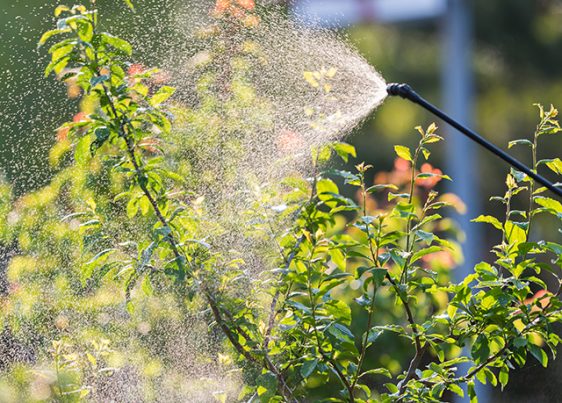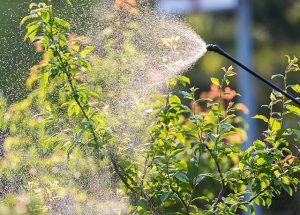
Spinetoram — toxicity, side effects, diseases and environmental impacts
Tuesday, November 14, 2017 by Janine Acero
http://www.naturalpedia.com/spinetoram-toxicity-side-effects-diseases-and-environmental-impacts.html

Spinetoram is a multi-component tetracyclic macrolide belonging in the spinosyn class of insecticides (Saccharopolyspora spinosa). It is applied on a variety of crops for the control of lepidopterous larvae (butterflies, moths and skippers) such as Apple moths, Grapevine moths, Codling moths and Oriental fruit moths; as well as leafminers (flies and sawflies); Pear slugs and Cherry slugs; and thrips, like the Western flower thrip.
Spinetoram has the molecular formula C85H138N2O20.

List of known side effects
Exposure or contact to spinetoram concentrate may cause allergic skin reactions, according to an entry in the PubChem Open Chemistry Database. Additionally, this insecticide is toxic to several organisms including:
- Crustaceans, including marine amphipods and shrimp-like mysids;
- Insects such as midge;
- Fishes like Sheepshead minnow; and
- Birds such as the Zebra finch.
Body systems affected by spinetoram
Based on animal study findings released by the European Food Safety Authority, which used 83 percent purity of Spinetoram, the insecticide “may cause damage to organ through prolonged or repeated exposure” after it caused arteritis (inflammation of the arteries) in dog models. Additionally, studies on rats showed evidence of reproductive toxicity through dystocia (obstructed labor). Moreover, the substance affected the lymph nodes, spleens, thymus, larynx, urinary bladder and kidney tubules, to name a few.
Despite the effects on the animal models, the U.S. Environmental Protection Agency (EPA) noted that spinetoram is “not likely to be carcinogenic to humans.”
In a Pesticide Fact Sheet released by the EPA, it was noted that spinetoram “has low acute toxicity via the oral, dermal and inhalation routes of exposure.” While it is a dermal sensitizer, it is not an eye or dermal irritant in low acute levels of exposure or contact. However, spinetoram may pose some inhalation risk for residential handlers and applicators using it on home lawns, gardens or ornamentals, as well as incidental oral risks for toddlers and small children.
Items that can contain spinetoram
Spinetoram is applied in a variety of crops, including grapes, apples, pears, apricots, cherries, plums and peaches.
How to avoid spinetoram
A safety data sheet cautions handlers and applicators of spinetoram to ensure good ventilation around the workplace; keep ignition sources like cigarettes and other flammable and combustible items away from the workplace; and keep the substance tightly sealed and stored and in cool, dry conditions.
The data sheet further notes that spinetoram must be kept away from foodstuffs, beverages, and feed. In case of contact, removed the contaminated clothing immediately and wash hands thoroughly. Generally avoid any contact with eyes and skin by wearing tightly sealed goggles and protective chemical-resistant gloves.
A respiratory device is also advised to be worn in case of exposure through inhalation.
Where to learn more
Summary
Spinetoram is an insecticide in the spinosyn class which is applied to a variety of crops, mostly fruits, to control the larvae of lepidopterous insects, leafminers and thrips.
Spinetoram is toxic to aquatic life such as crustaceans and fish, and even birds and other insects.
Spinetoram affects the arteries, lymph nodes, spleens, thymus, larynx, urinary bladder and kidney tubules based on animal studies, but is not found to be carcinogenic to humans.
Spinetoram is a skin sensitizer and an eye irritant. It is advised to wear protective goggles and chemical-resistant gloves before handling and applying this substance, and to store it in tightly sealed containers.
Sources include:
Tagged Under: Tags: Spinetoram





